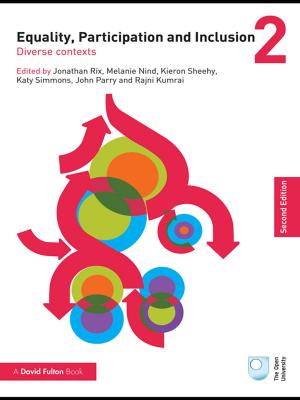Social Class and the Helping Professions
A Clinician's Guide to Navigating the Landscape of Class in America
Nonfiction, Health & Well Being, Psychology, Counselling, Mental Health| Author: | ISBN: | 9781136718410 | |
| Publisher: | Taylor and Francis | Publication: | April 27, 2012 |
| Imprint: | Routledge | Language: | English |
| Author: | |
| ISBN: | 9781136718410 |
| Publisher: | Taylor and Francis |
| Publication: | April 27, 2012 |
| Imprint: | Routledge |
| Language: | English |
This book provides a comprehensive examination of the intersection of social class and the helping professions, including examinations of the role of social class in American culture, classism, social class and mental health, and the American Dream. It will be a valuable tool for practitioners in a variety of mental health professions, providing a clearer understanding of social class as it relates to themselves and their clients. The first section contains an introduction to the global, historical, and sociological aspects of class and an in-depth look at urban and rural poverty, the middle class, and the upper class and economic privilege. The reader will find not only an examination of these social constructs, but also an opportunity to examine their own experience with social class. The next section brings the reader into the world of their clients in more specific ways, examining the role social class plays in mental health and mental health counseling, in the family structure and in counseling families, and in the experiences people have throughout the educational process and in schools. Finally, the last section of the book discusses specific techniques and models to use in the reader’s clinical practice, including how to assess clients’ experiences of class and classism and how these experiences have shaped their worldview and view of the self. Case studies throughout demonstrate fair and accurate diagnosis, assessment, and treatment.
This book provides a comprehensive examination of the intersection of social class and the helping professions, including examinations of the role of social class in American culture, classism, social class and mental health, and the American Dream. It will be a valuable tool for practitioners in a variety of mental health professions, providing a clearer understanding of social class as it relates to themselves and their clients. The first section contains an introduction to the global, historical, and sociological aspects of class and an in-depth look at urban and rural poverty, the middle class, and the upper class and economic privilege. The reader will find not only an examination of these social constructs, but also an opportunity to examine their own experience with social class. The next section brings the reader into the world of their clients in more specific ways, examining the role social class plays in mental health and mental health counseling, in the family structure and in counseling families, and in the experiences people have throughout the educational process and in schools. Finally, the last section of the book discusses specific techniques and models to use in the reader’s clinical practice, including how to assess clients’ experiences of class and classism and how these experiences have shaped their worldview and view of the self. Case studies throughout demonstrate fair and accurate diagnosis, assessment, and treatment.















